 Web Front-end
Web Front-end JS Tutorial
JS Tutorial For the second time, let's talk about the basic knowledge of JS require.js modular tool_javascript skills
For the second time, let's talk about the basic knowledge of JS require.js modular tool_javascript skillsPrevious article: JS modular tool We introduced requirejs in a very simple way: http://www.jb51.net/article/82527.htm, this article will talk about requirejs Some basic knowledge, including how to use API, etc.
Basic API
require will define three variables: define, require, requirejs, where require === requirejs, generally using require is shorter
define As you can see from the name, this API is used to define a module
require Load dependent modules and execute the callback function after loading
a.js in the previous article:
define(function(){
function fun1(){
alert("it works");
}
fun1();
})
Define a module through the define function, and then use it in the page:
require(["js/a"]);
To load the module (note that the dependency in require is an array, even if there is only one dependency, you must use an array to define it). The second parameter of the require API is callback, a function that is used to handle the logic after loading. , such as:
require(["js/a"],function(){
alert("load finished");
})
Load file
In the previous examples, the loaded modules were all local js, but in most cases the JS that needs to be loaded by the web page may come from the local server, other websites or CDN, so it cannot be loaded in this way. We can load a jquery Library as an example:
require.config({
paths : {
"jquery" : ["http://libs.baidu.com/jquery/2.0.3/jquery"]
}
})
require(["jquery","js/a"],function($){
$(function(){
alert("load finished");
})
})
This involves require.config. require.config is used to configure the module loading location. To put it simply, it is to give the module a shorter and easier to remember name. For example, mark Baidu’s jquery library address as jquery, so When requiring, you only need to write ["jquery"] to load the js. We can also configure local js like this:
require.config({
paths : {
"jquery" : ["http://libs.baidu.com/jquery/2.0.3/jquery"],
"a" : "js/a"
}
})
require(["jquery","a"],function($){
$(function(){
alert("load finished");
})
})
Configuring paths will make our module names more refined. Paths also has an important function, which is to configure multiple paths. If the remote cdn library does not load successfully, you can load the local library, such as:
require.config({
paths : {
"jquery" : ["http://libs.baidu.com/jquery/2.0.3/jquery", "js/jquery"],
"a" : "js/a"
}
})
require(["jquery","a"],function($){
$(function(){
alert("load finished");
})
})
After this configuration, when Baidu’s jquery is not loaded successfully, jquery in the local js directory will be loaded
When using requirejs, you do not need to write the .js suffix when loading the module, and of course you cannot write the suffix
The $ parameter is found in the callback function in the above example. This is the output variable of the dependent jquery module. If you depend on multiple modules, you can write multiple parameters in sequence to use:
require(["jquery","underscore"],function($, _){
$(function(){
_.each([1,2,3],alert);
})
})
If a module does not output variable values, then there is none, so try to write the output module in front to prevent misunderstandings caused by misplaced positions
Global configuration
The require.config configuration appears repeatedly in the above example. If the configuration is added to each page, it will definitely look very inelegant. requirejs provides a function called "master data". We first create a main.js :
require.config({
paths : {
"jquery" : ["http://libs.baidu.com/jquery/2.0.3/jquery", "js/jquery"],
"a" : "js/a"
}
})
Then use the following method to use requirejs on the page:
To explain, the script tag that loads the requirejs script adds the data-main attribute. The js specified by this attribute will be processed after reuqire.js is loaded. After we add the require.config configuration to data-main, we can make each All pages use this configuration, and then require can be used directly in the page to load all short module names
data-main also has an important function. When the script tag specifies the data-main attribute, require will default to the js specified by data-main as the root path. What does this mean? For example, after data-main="js/main" is set above, after we use require(['jquery']) (without configuring jquery paths), require will automatically load the js/jquery.js file instead of jquery.js, equivalent to the default configuration:
require.config({
baseUrl : "js"
})
Third Party Modules
Modules loaded through require generally need to comply with AMD specifications, that is, use define to declare the module. However, sometimes non-AMD standard js needs to be loaded. At this time, another function is needed: shim, and shim is also difficult to explain. Understand, shim is directly translated as "pad", which actually has this meaning. Currently I mainly use it in two places
1. Non-AMD module output, "pad" non-standard AMD modules into available modules. For example: in the old version of jquery, it does not inherit the AMD specification, so you cannot directly require["jquery"]. At this time, A shim is required. For example, if I use the underscore class library, but it does not implement the AMD specification, then we can configure it like this
require.config({
shim: {
"underscore" : {
exports : "_";
}
}
})
After configuring this way, we can reference the underscore module in other modules:
require(["underscore"], function(_){
_.each([1,2,3], alert);
})
For non-AMD modules in the form of plug-ins, we often use jquery plug-ins, and these plug-ins basically do not comply with AMD specifications, such as the jquery.form plug-in. At this time, you need to "pad" the form plug-in into jquery:
require.config({
shim: {
"underscore" : {
exports : "_";
},
"jquery.form" : {
deps : ["jquery"]
}
}
})
can also be abbreviated as:
require.config({
shim: {
"underscore" : {
exports : "_";
},
"jquery.form" : ["jquery"]
}
})
这样配置之后我们就可以使用加载插件后的jquery了
require.config(["jquery", "jquery.form"], function($){
$(function(){
$("#form").ajaxSubmit({...});
})
})
好了,requirejs的基本配置大致就是这么多,还有一些扩展的功能会在之后的篇幅中提到,大家不要错过呀!
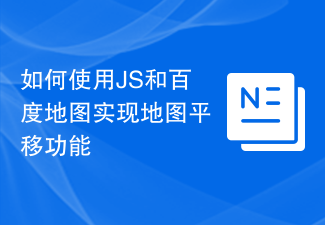 如何使用JS和百度地图实现地图平移功能Nov 21, 2023 am 10:00 AM
如何使用JS和百度地图实现地图平移功能Nov 21, 2023 am 10:00 AM如何使用JS和百度地图实现地图平移功能百度地图是一款广泛使用的地图服务平台,在Web开发中经常用于展示地理信息、定位等功能。本文将介绍如何使用JS和百度地图API实现地图平移功能,并提供具体的代码示例。一、准备工作使用百度地图API前,首先需要在百度地图开放平台(http://lbsyun.baidu.com/)上申请一个开发者账号,并创建一个应用。创建完成
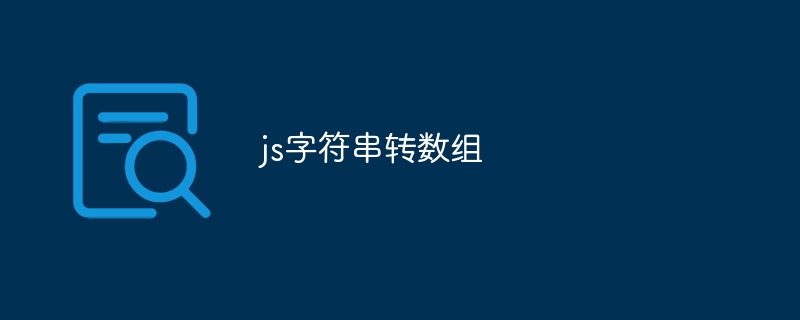 js字符串转数组Aug 03, 2023 pm 01:34 PM
js字符串转数组Aug 03, 2023 pm 01:34 PMjs字符串转数组的方法:1、使用“split()”方法,可以根据指定的分隔符将字符串分割成数组元素;2、使用“Array.from()”方法,可以将可迭代对象或类数组对象转换成真正的数组;3、使用for循环遍历,将每个字符依次添加到数组中;4、使用“Array.split()”方法,通过调用“Array.prototype.forEach()”将一个字符串拆分成数组的快捷方式。
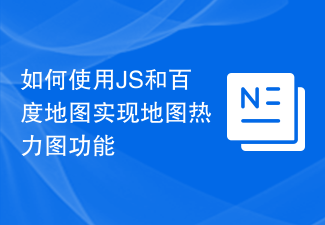 如何使用JS和百度地图实现地图热力图功能Nov 21, 2023 am 09:33 AM
如何使用JS和百度地图实现地图热力图功能Nov 21, 2023 am 09:33 AM如何使用JS和百度地图实现地图热力图功能简介:随着互联网和移动设备的迅速发展,地图成为了一种普遍的应用场景。而热力图作为一种可视化的展示方式,能够帮助我们更直观地了解数据的分布情况。本文将介绍如何使用JS和百度地图API来实现地图热力图的功能,并提供具体的代码示例。准备工作:在开始之前,你需要准备以下事项:一个百度开发者账号,并创建一个应用,获取到相应的AP
 如何使用JS和百度地图实现地图多边形绘制功能Nov 21, 2023 am 10:53 AM
如何使用JS和百度地图实现地图多边形绘制功能Nov 21, 2023 am 10:53 AM如何使用JS和百度地图实现地图多边形绘制功能在现代网页开发中,地图应用已经成为常见的功能之一。而地图上绘制多边形,可以帮助我们将特定区域进行标记,方便用户进行查看和分析。本文将介绍如何使用JS和百度地图API实现地图多边形绘制功能,并提供具体的代码示例。首先,我们需要引入百度地图API。可以利用以下代码在HTML文件中导入百度地图API的JavaScript
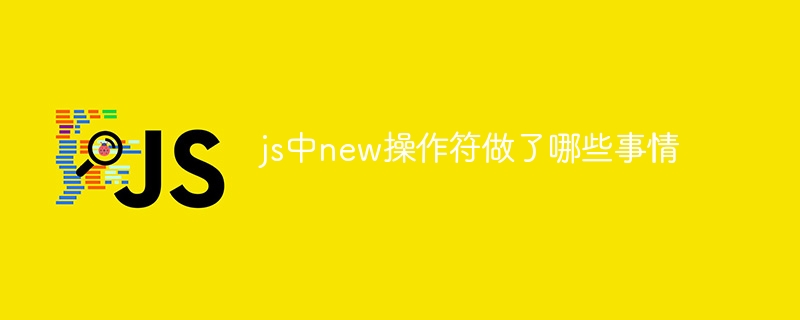 js中new操作符做了哪些事情Nov 13, 2023 pm 04:05 PM
js中new操作符做了哪些事情Nov 13, 2023 pm 04:05 PMjs中new操作符做了:1、创建一个空对象,这个新对象将成为函数的实例;2、将新对象的原型链接到构造函数的原型对象,这样新对象就可以访问构造函数原型对象中定义的属性和方法;3、将构造函数的作用域赋给新对象,这样新对象就可以通过this关键字来引用构造函数中的属性和方法;4、执行构造函数中的代码,构造函数中的代码将用于初始化新对象的属性和方法;5、如果构造函数中没有返回等等。
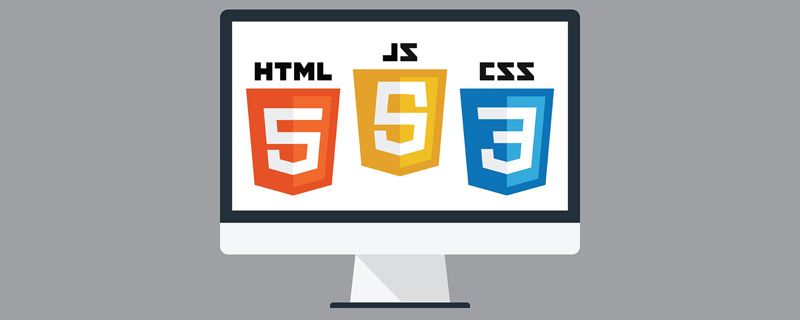 用JavaScript模拟实现打字小游戏!Aug 07, 2022 am 10:34 AM
用JavaScript模拟实现打字小游戏!Aug 07, 2022 am 10:34 AM这篇文章主要为大家详细介绍了js实现打字小游戏,文中示例代码介绍的非常详细,具有一定的参考价值,感兴趣的小伙伴们可以参考一下。
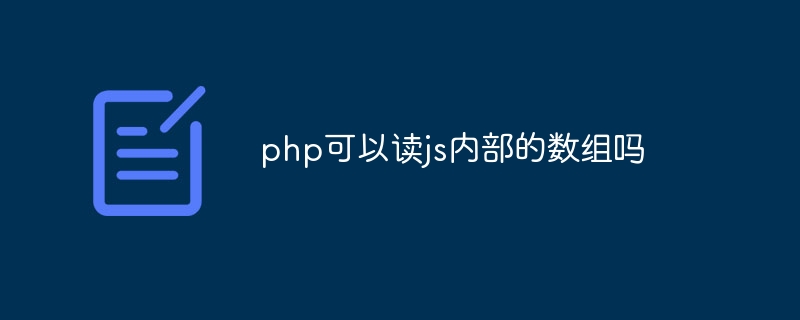 php可以读js内部的数组吗Jul 12, 2023 pm 03:41 PM
php可以读js内部的数组吗Jul 12, 2023 pm 03:41 PMphp在特定情况下可以读js内部的数组。其方法是:1、在JavaScript中,创建一个包含需要传递给PHP的数组的变量;2、使用Ajax技术将该数组发送给PHP脚本。可以使用原生的JavaScript代码或者使用基于Ajax的JavaScript库如jQuery等;3、在PHP脚本中,接收传递过来的数组数据,并进行相应的处理即可。
 js是什么编程语言?May 05, 2019 am 10:22 AM
js是什么编程语言?May 05, 2019 am 10:22 AMjs全称JavaScript,是一种具有函数优先的轻量级,直译式、解释型或即时编译型的高级编程语言,是一种属于网络的高级脚本语言;JavaScript基于原型编程、多范式的动态脚本语言,并且支持面向对象、命令式和声明式,如函数式编程。


Hot AI Tools

Undresser.AI Undress
AI-powered app for creating realistic nude photos

AI Clothes Remover
Online AI tool for removing clothes from photos.

Undress AI Tool
Undress images for free

Clothoff.io
AI clothes remover

AI Hentai Generator
Generate AI Hentai for free.

Hot Article

Hot Tools

SublimeText3 Linux new version
SublimeText3 Linux latest version

WebStorm Mac version
Useful JavaScript development tools

Dreamweaver CS6
Visual web development tools

SAP NetWeaver Server Adapter for Eclipse
Integrate Eclipse with SAP NetWeaver application server.

SublimeText3 Chinese version
Chinese version, very easy to use





